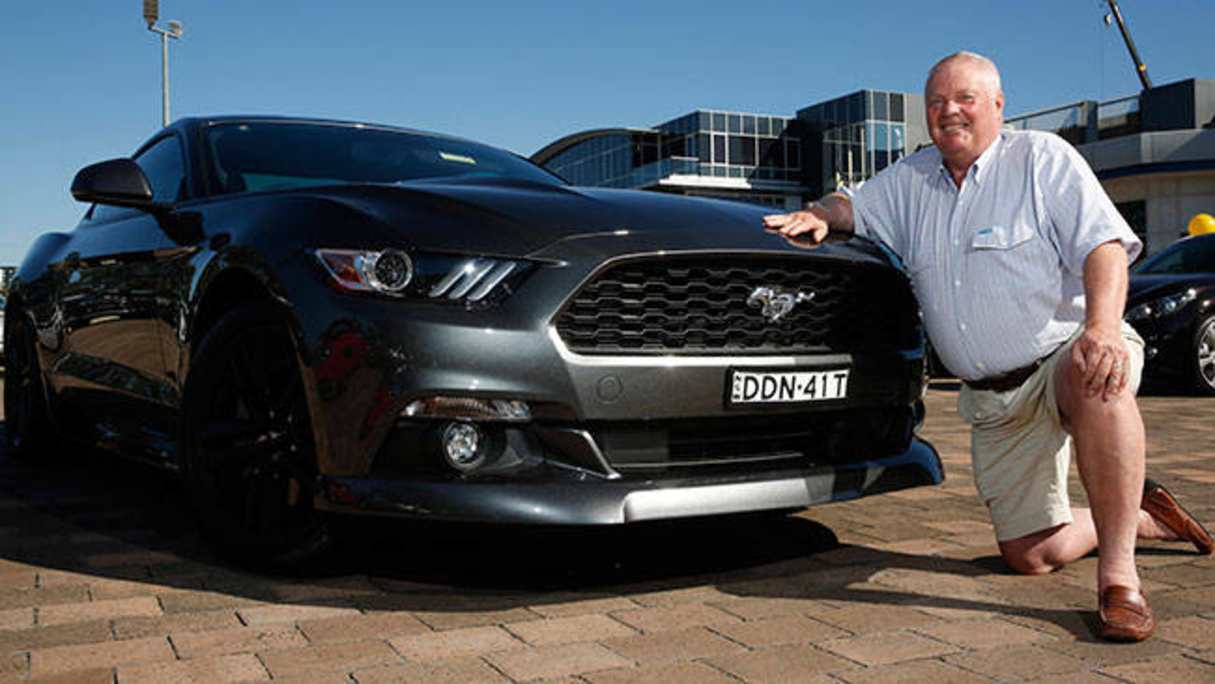Spend a nest egg wisely or grow old disgracefully... try these for motoring into the sunset.
Once upon a time, retirement used to be so simple.
You toiled until your 65th birthday, knocked off, collected your superannuation or the pension, took up bowls, golf, punting or home brewing and shuffled off this mortal coil a few years later.
It's all so complicated now. You might hit 100 but your super could all be gone when you're 75 and you might have to keep working until you're 98.
One way or another, you'll need a car — and not just any car, either. The car you buy when you retire has to meet specific criteria, regardless of what you spend.
As we slide inevitably into old age and decrepitude, we want a car that's kind to our body and easy to drive.
Then again, you may wish to grow old disgracefully with a Nissan GTR chipped for 700 horsepower.
Let's look at the big issues on the road to retirement.
Depreciation

On average, a new car depreciates by 25-30 per cent in the first 12 months. In the first three years, it's 50-60 per cent.
When you're on a fixed income in retirement, no matter how much or how little that is, depreciation on a new car will tear up your hard-earned capital.
So a late model used car will effectively put money into your retirement account compared with a new one.
You should be able to get a factory-backed used car warranty on Model X if you buy from that brand's franchised dealers. That's the safest place to buy a used car because the used stock is usually better quality, often sold new by the dealer and serviced by them as well.
Third-party aftermarket warranties are not worth the paper they're written on.
If only new will do, that's OK because some cars hold their value much better than others. Star performers include the Toyota Prado, LandCruiser 200 Series, HiLux and, in all probability, the new Fortuner.
Mazda's 2, 3 and CX-5, Subaru Forester and Outback, Porsche Cayman, Macan and 911 also claim better than average retained values.
Reliability

There's a very good reason why you see so many old blokes driving Toyota Camrys. They're the automotive equivalent of cash and fixed interest investments — the rewards aren't spectacular but they're dependable and risk-free.
You can be pretty confident of minimal grief from Toyota, Lexus, Porsche, Honda, Mitsubishi, Mazda and Hyundai. Kia has the market's longest warranty — seven years/unlimited kilometres — so we're happy to recommend its cars as well.
Safety

Twenty first century safety systems are so sophisticated they can partly compensate for deteriorating reflexes, sight and mobility. In the fraction of a second it takes to react in an emergency, today's technology may be just that tinier fraction of a second quicker than you are to identify it and take action.
Automatic emergency braking, blind spot detection, collision warning, fatigue warning, rear cross traffic alert, lane departure warning and lane keeping are now available, often as a reasonably priced package, from brands including Subaru, Toyota, Volvo, Audi, Mazda, BMW, Mercedes, Ford, Hyundai, Kia and Honda.
A camera and rear proximity sensors, now standard on most new cars, make reversing and parking easy.
Comfort and convenience

Let's talk ride comfort. As a rule, the bigger the wheel diameter and the lower profile the tyres, the harsher the ride.
Adaptive dampers, with comfort and sport settings, can compensate for an aggressive wheel and tyre specification.
The cars and SUVs that deliver the most comfortable, compliant ride on our roads tend to have 16 or 17-inch wheels and tyre aspect ratios (the height of the tyre relative to its width) of 55 per cent or greater.
Fortuitously, these are fitted to lower priced models bought by sensible people.
Cars we'd be comfortable in on any road include Ford Falcon, Mondeo and Territory, Holden Commodore, Hyundai Santa Fe, Kia Sorento, Jaguar XF, Mercedes E-Class and GLE, Mitsubishi Pajero Sport, Peugeot 308, Subaru Forester and Outback, Toyota Camry, Aurion, RAV4 and Prado, Suzuki Vitara, Volkswagen Polo, Golf and Passat and Volvo XC90.
Mid-size SUVs such as the RAV4 and Forester have other comfort and convenience advantages as well, including easy front seat access, with minimal bending and stretching compared with a low-slung hatch or sedan, a high seating position and large glass area for clear vision around the car.
They also have a low cargo bay floor with a wide opening, so minimal effort is required to get bulky or heavy objects in and out.
In control

I have a special pair of bifocal driving glasses just for road-testing, because some cars' instrument and control layouts are so illegible and inefficient as to be borderline dangerous to operate on the move.
Others, such as BMW and Toyota, have uncluttered instruments and intuitive control layouts with easily readable fonts on buttons, dials and switches.
Multimedia touchscreens are generally easier and quicker to operate than remote cursor-based interfaces (especially the abominable Lexus item) but every brand has a different version — you really need to play with it to understand its idiosyncrasies. For using a cursor, BMW's iDrive is the benchmark.
Look for a big, bright digital speedo, easily accessible presets for your favourite audio sources, simple, reliable Bluetooth/Apple CarPlay/Android Auto smartphone connectivity and voice control that works.
Some voice setups only understand Martian and will drive you insane (there's no point yelling, either, believe me) while others such as Audi's new A4 are so responsive and nuanced it's almost like talking to a real person. Someone who'll never make smart comments about older drivers, either.
It's elementary, my dear Watson

Keith Watson has just put down a deposit on a new Ford Mustang GT coupe. Lucky man.
"I certainly wasn't ready for a Camry," says Watson, 68, a retired fleet manager whose daily drive is a Toyota Prado. He's had some pretty choice machinery in his time, including a 1969 GT Falcon back in the day.
"Just because you've retired you don't lose that lust for a nice car," he says.
He looked at a few before settling on the 'Stang.
"My wife kept telling me I really wanted a Porsche Boxster but they're ugly with the roof up. I like the Subaru WRX STI but it's hard work with the manual and would lose a lot of appeal with an automatic. I think the new Commodore SSV and Falcon V8 are great cars, too, but they're not me."
"I wanted a cruiser, not a rocket ship," he says.
He expects to wait up to 18 months for his Mustang but that doesn't worry him one bit. "I knew if I didn't buy something nice now, I probably never would. I'll own the Mustang until I can't drive it any more."
Sedate or stupendous? What would your retirement car be? Let us know in the comments below.





.jpg)
.jpg)


.jpg)


.jpg)




.jpg)



.jpg)
.jpg)



